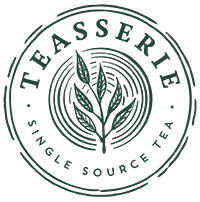As purveyors of quality teas, we place a higher value on teas that have a single origin, sourced from growers from a single estate, farm, or garden.
The aim of these conscientious tea growers is to conserve the ecology in which their tea plants grow, using sustainable practices that make use of the tea plant’s natural habitat using naturally occurring fertilizers and controlling the growth of tea plants … without biological agents such as pesticides that can pollute the soil, water and air.
We believe that the local climate, soil, elevation, tea variety, and of course the skill of the tea grower all play an essential role in the final taste.
Making tea is a personal experience as well as a taste. How you prepare and serve tea ultimately should be to your individual preference and enjoyment. Find a combination that suits you, your family and your guests.
Brewing Methods
What is considered “good tea” in the West is different from the East (Asia). In the West, good teas are considered those that produce certain preferred tastes. Tea makers cut and blend certain teas to create these uniform recognizable tastes. Some examples of popular premium-blended teas are English Breakfast and Earl Grey.
In the East (Asia), tea drinkers prefer a brewing method that lets them taste the tea in “sections.” When tea leaves are brewed in sections, the complete full flavor spectrum is not extracted at one time, but in parts. A “good tea” in the East is made from full tea leaves with shorter infusions with more tea leaves — no longer than 20 seconds or a bit longer with the next infusion.
Brewing varies, depending on which flavor nuances in the tea the drinker wishes to taste. This method is called Gong Fu (sometimes called “ceremonial style”). In Gong Fu brewing, the flavor unfolds gradually, with the whole leaf used, which can make the flavors more intense than in Western-style brewing. Western-style brewing uses fewer leaves, more water, and longer brewing times to extract as much of the flavor as possible all at one time. In actuality, the brewing details we list on our website are a cross between these two brewing styles.
For Gong Fu brewing, general guidelines are 8g of tea to 200ml of water. For green and white tea infuse up to 20 seconds. For black, oolong and pu-erh teas infuse between 10 to 15 seconds for the first infusion; add more seconds for each additional infusion if doing more than one infusion.
Tea is similar to wine; it changes over time. Like incantations of wine, the first infusion will be different from the second and so on. Gong Fu is a particularly good method for multiple infusions – sometimes as many as 10 times, depending on the tea and those who enjoy the flavor variations with each new infusion.
As you browse our tea selections, note that we describe each tea’s distinct flavors and offer our own special brewing suggestions that we feel might be helpful in giving you the best tea experience. Know that we respect and honor your personal tastes, whether they be Western or Gong Fu brewing styles. With some of our teas, we do recommend Gong Fu over Western brewing, but again, the choice is yours.
Tea Preparation
Rinse your tea first. This opens the tea leaf up and prepares it for brewing, allowing it to steep for a shorter time, which means it will be less bitter and more flavorful. This is because the open leaves provide a larger surface area from which to extract its flavor and prevents the bitterness caused by over-extracting.
Water
Always use pure clean fresh filtered water, not only because of safety but because impurities can dramatically affect the taste of your tea.
Temperature
Water temperature is crucial for making a delicious cup of tea, beginning with heating the cup first.
The duration of the infusion and temperature depends on personal preference, but different classes of teas have slightly different brewing times. As a general rule, delicate-leaf teas such as white and green, have better flavor if steeped for less time and lower temperatures. Their delicate leaves will burn and leave a bitter flavor if brewed at higher temperatures or boiled.
Heat water for white and green teas to 175F-185F. For oolong heat to 195F. If your tea tastes bitter, steep the tea for a shorter time with a bit lower temperature.
Bring the temperature to 205F for black teas to avoid your tea tasting dull and flat. Heartier black teas taste better at hotter temperatures, the temperature depending on the style at which you are brewing. Two minutes is the general brewing time for most teas, even for black teas; otherwise your tea will taste bitter and over-extracted, as with the other tea types. Matcha teas have their own unique brewing style. See our Matcha page for directions.
Vessels and Equipment
The type of teapot also affects the quality of the infusion, so consider carefully the variety of tea and the water temperature when selecting your teapot. Iron or a traditional Chinese clay teapot (called a “yixing”) are good at retaining heat over a longer period of time and extracting the tea’s full flavor. Glass or porcelain teapots lose their heat more quickly.
Yixing is good for black teas and those teas heated at higher temperatures, such as oolong and pu-erh. Glass or porcelain are good choices for green and white teas which need the vessel to stay cooler.
Another option when convenience is important is a teapot or a cup with a removable tea infuser so you can insert fresh or brewed leaves in the infuser and simply lift it out when brewing is complete. You’ll want an infuser with enough room for the water to circulate and flow through the tea leaves. Be sure not to let the tea leaves continue brewing in the water for longer than the recommended time for each brewing method.
Visit our Teaware page for more ideas on teapots, kettles, teacups, tea sets and helpful utensils and accessories.
General Infusions By Tea Type
White Tea. 2.5tsp (3g) of leaves per 7oz (200ml) of water. Brew at 185F for 1-2 minutes for Western brewing. For Gong Fu style use 8g of leaves and steep for 20 seconds. Tea can be re-brewed up to 5 times using Gong Fu style.
Green Tea. 3g of leaves per 7oz (200ml) of water. Brew at 175F for 2 minutes. These green teas can be re-brewed up to 5 times using Gong Fu style.
Oolong Tea. 3g of leaves to 7oz (200ml) of water at 195F for 2 minutes. Can be re-brewed up to 5 times with hotter water and longer infusions when brewed Gong Fu style.
Black Tea. 3g of leaves to 7oz (200ml) of water. Brew at 205F for 2 minutes. Black teas can be re-brewed 5 times using hotter water and longer infusions when using Gong Fu style.
Pu-erh Tea. 5g of leaves per 4oz (120ml) of water. Rinse, then brew for 3 seconds, increasing the seconds with each infusion, up to 8-10 infusions. Bring water to 205-212F for a full extraction of the many flavor layers. Gong Fu brewing recommended.
Step-By-Step Directions
-
Bring cold water to the appropriate temperature in a temperature-controlled kettle or with a thermometer.
-
When water comes to your target temperature, remove from heat.
-
Add the appropriate amount of whole leaf tea and water to the teapot.
-
Pour the heated water into the teapot over the tea leaves.
-
Steep for the appropriate time.
-
Strain the tea leaves as you pour the tea into heated teacups.
-
Avoid over-extracting.
Serve while fresh and hot. If your tea becomes too cool, drink it room temperature or over ice. If you prefer it hot, start over with fresh water and bring to proper temperature rather than reheating. If desired, add a little milk, lemon, honey, or sugar. Enjoy!

